-
Are Dental X-Rays Safe?
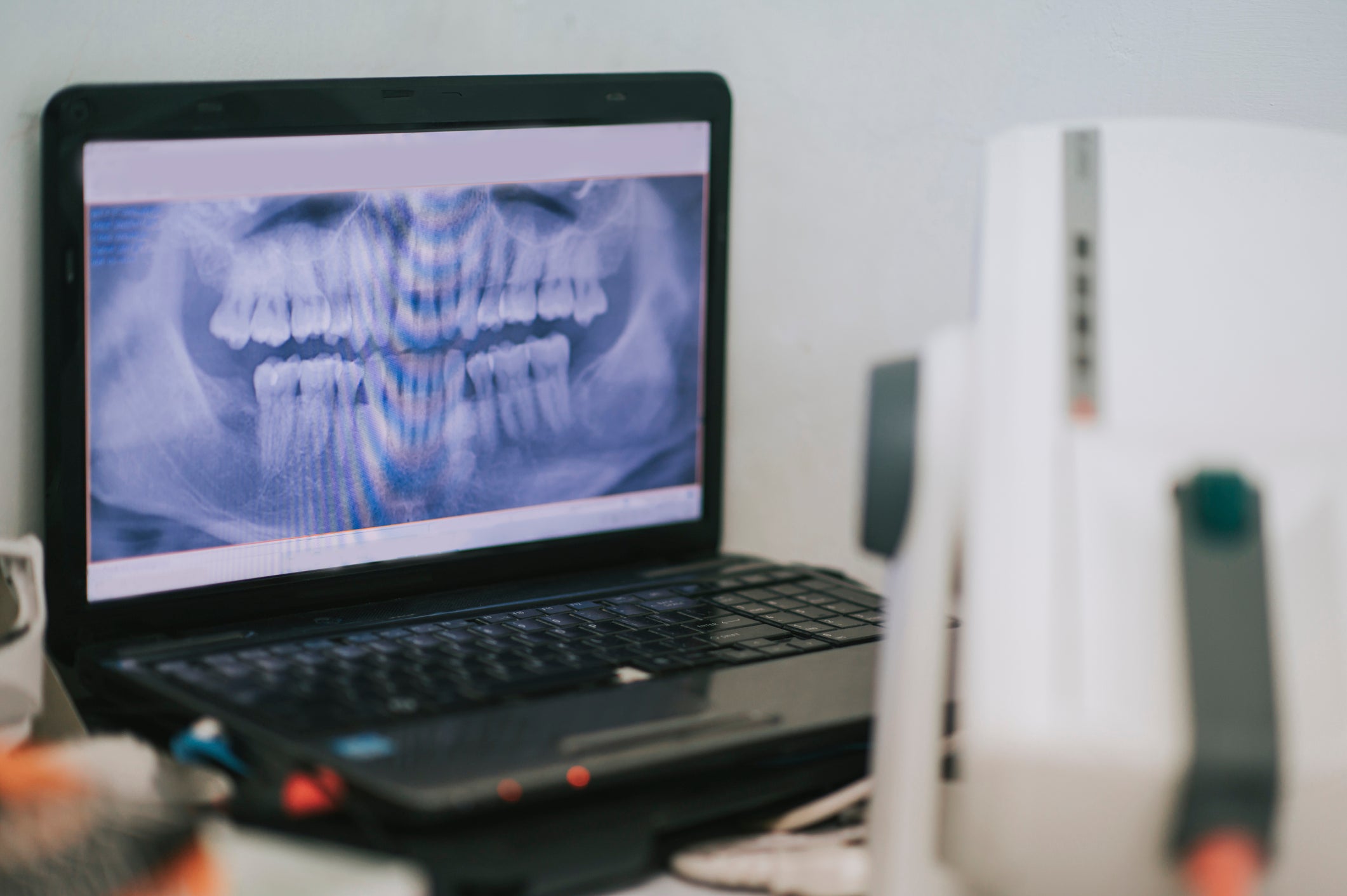
When you visit the dentist for a routine appointment, you may have dental X-rays taken. This is typically done once a year to track your oral health. As a concerned patient, you may be wondering—are dental X-rays safe for you and your family? Why are they even necessary? Find the answers to your questions here.
The Importance of Dental X-Rays
While a visual inspection of your mouth is an important part of any oral exam, your dentist can’t see what’s going on beneath the surface. The purpose of an X-ray is to inspect the jaw bone, tooth roots, and internal layers of your teeth. Your dentist may recommend X-rays for several reasons:
- Diagnose oral health problems, from cavities and gum disease to abscesses and bone infections, before the condition gets any worse.
- Monitor recovery following a maxillofacial
- Determine if certain treatments are necessary, including wisdom tooth extraction and orthodontics.
Types of Dental X-Rays
Dental X-rays come in many forms. The type you receive depends on the reason your dentist wants to X-ray your mouth. Here are the most common dental X-rays in use today:
- Bitewing X-rays allow the dentist to check for cavities and assess the filling in the crowns of your teeth.
- Periapical X-rays display teeth from the crown to the root so the dentist can check for cavities, root problems, and issues in the surrounding jaw bone.
- Panoramic X-rays track a child’s tooth development to determine if braces are necessary.
- Occlusal X-rays show the roof or floor of the mouth and are used to find yet-to-erupt teeth.
- Extraoral X-rays capture images of a child’s skull to monitor overall jaw development.
- Cone beam computed tomography (CBCT) offers a 3D view of the mouth to help the dentist assess tooth spacing and development.
What about Radiation Exposure?
X-rays emit a small amount of radiation, which is why some patients worry about their safety. However, consider that the average American receives a radiation dose of about 620 millirem every year. The American Dental Association reports that intraoral X-rays expose patients to 0.5 millirem of radiation, while panoramic dental X-rays produce a 1.0 millirem dose of radiation.
Digital dental X-rays generate even less radiation. Many dentists use digital technology to take X-rays these days—not only for their increased safety but because they provide clearer images in a shorter amount of time. Even with negligible radiation levels from digital X-rays, the ADA still recommends that patients wear a lead apron over their abdomen and neck for added protection.
All things considered, the benefits of dental X-rays far outweigh the risks. Park 56 Dental is pleased to offer advanced digital X-rays to our patients. As part of our focus to make the dental experience as safe and comfortable as possible, we are happy to answer any questions you have. Give us a call at (212) 826-2322 or contact us online to learn more or schedule an appointment at our NYC dentist office.
-
The Dos and Don’ts of Wearing Invisalign
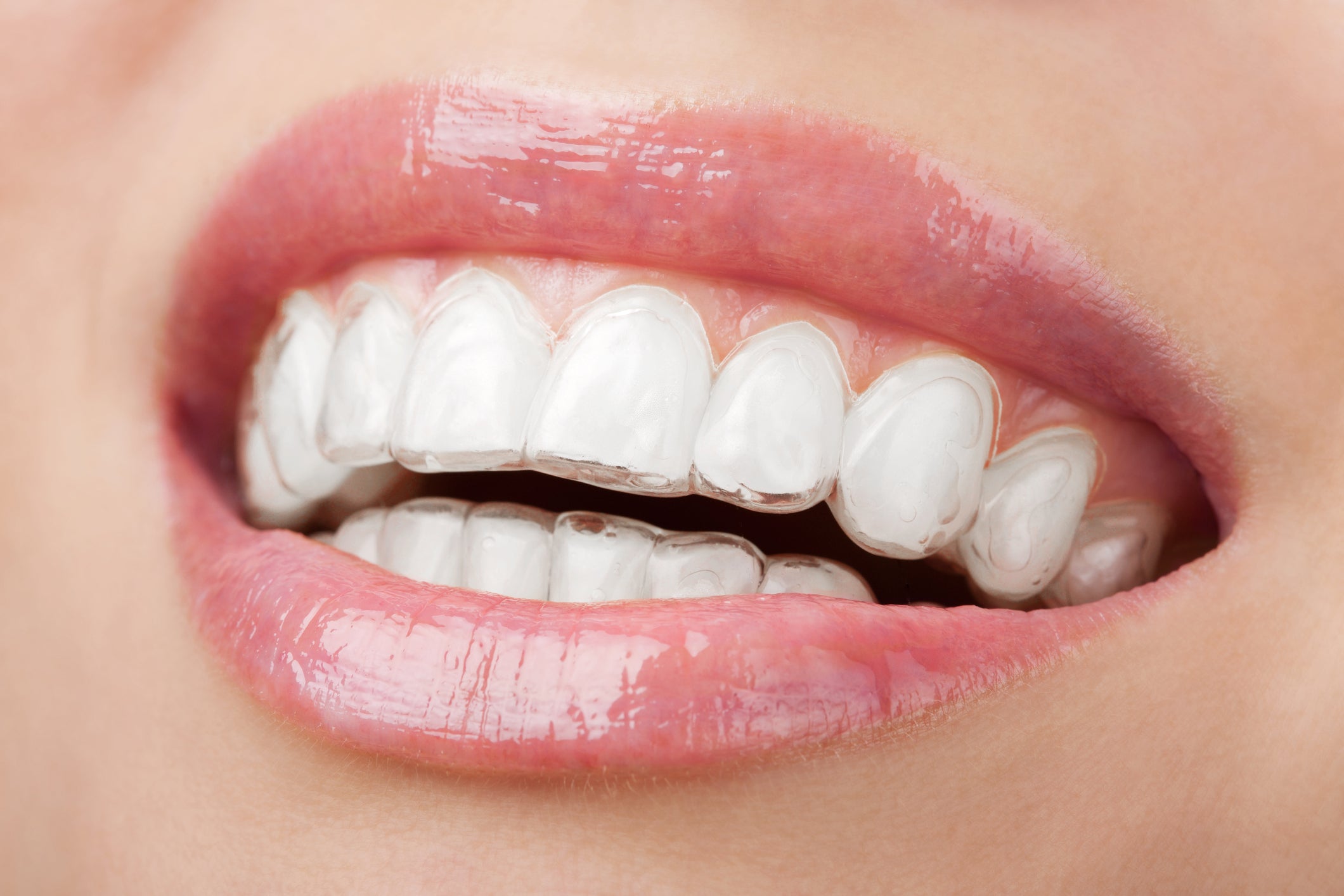
Have you chosen Invisalign over traditional braces to straighten your teeth? As a fast, effective, virtually invisible way to get the smile of your dreams, Invisalign is popular among teens and adults alike. Just be aware that this tooth-straightening method has specific care requirements. Here are the basic dos and don’ts of wearing Invisalign to ensure the best results from your investment.
- Do soak and brush your trays daily: Start off each morning by soaking your aligners in denture cleaner or Invisalign cleaning crystals. Then, remove residue by brushing the aligners using a separate toothbrush from the one you use to brush your teeth. Rinse the trays and slip them back into your mouth. Do this again every night before bed.
- Do remove the trays to eat and drink: Apart from water, you should not eat or drink anything while wearing your Invisalign. Food and beverages can stain the clear plastic aligners and encourage particles to become stuck between your teeth.
- Do brush and floss after eating: When you finish a meal or snack, brush and floss to remove particles before putting your Invisalign back in. If you can’t do this while away from home, at least rinse your mouth out or chew sugarless gum for a few minutes.
- Do wear your Invisalign 20 to 22 hours a day: If you’re not eating or drinking, you should be wearing your aligners, including while you sleep. Failing to follow this schedule could delay your treatment.
- Don’t snack excessively: Are you accustomed to snacking or drinking soda and coffee throughout the day? You may need to reassess these habits. Every time you remove the trays to eat and drink, you must clean your mouth to prevent cavities and staining. Your oral health—not to mention your waistline—will thank you for cutting down on snacks and drinks between meals during Invisalign treatment.
- Don’t leave your trays lying around: To prevent losing or damaging your aligners, store them in their carrying case whenever you remove them from your mouth. This also protects against bacteria buildup. Help the case stay clean by rinsing your trays before putting them inside.
- Don’t leave town without your next set of aligners: Invisalign treatment involves swapping out the trays every few weeks. If you’re going on vacation, make sure you bring the next set with you to avoid delaying the results.
- Don’t smoke: Tobacco will quickly discolor your clear aligners, not to mention stain your teeth and cause numerous other oral health problems. If you are currently a smoker, consider quitting before you begin Invisalign treatment. Your overall health will improve if you do.
Park 56 Dental is a certified Invisalign provider in NYC. We can help you plan your smile transformation from the comfort of our spa-like office. Here, you’ll receive exceptional care during convenient hours that fit your schedule. To learn more about Invisalign, please contact us online or call (212) 826-2322 and schedule a complimentary consultation today.
-
Dental Care During Pregnancy
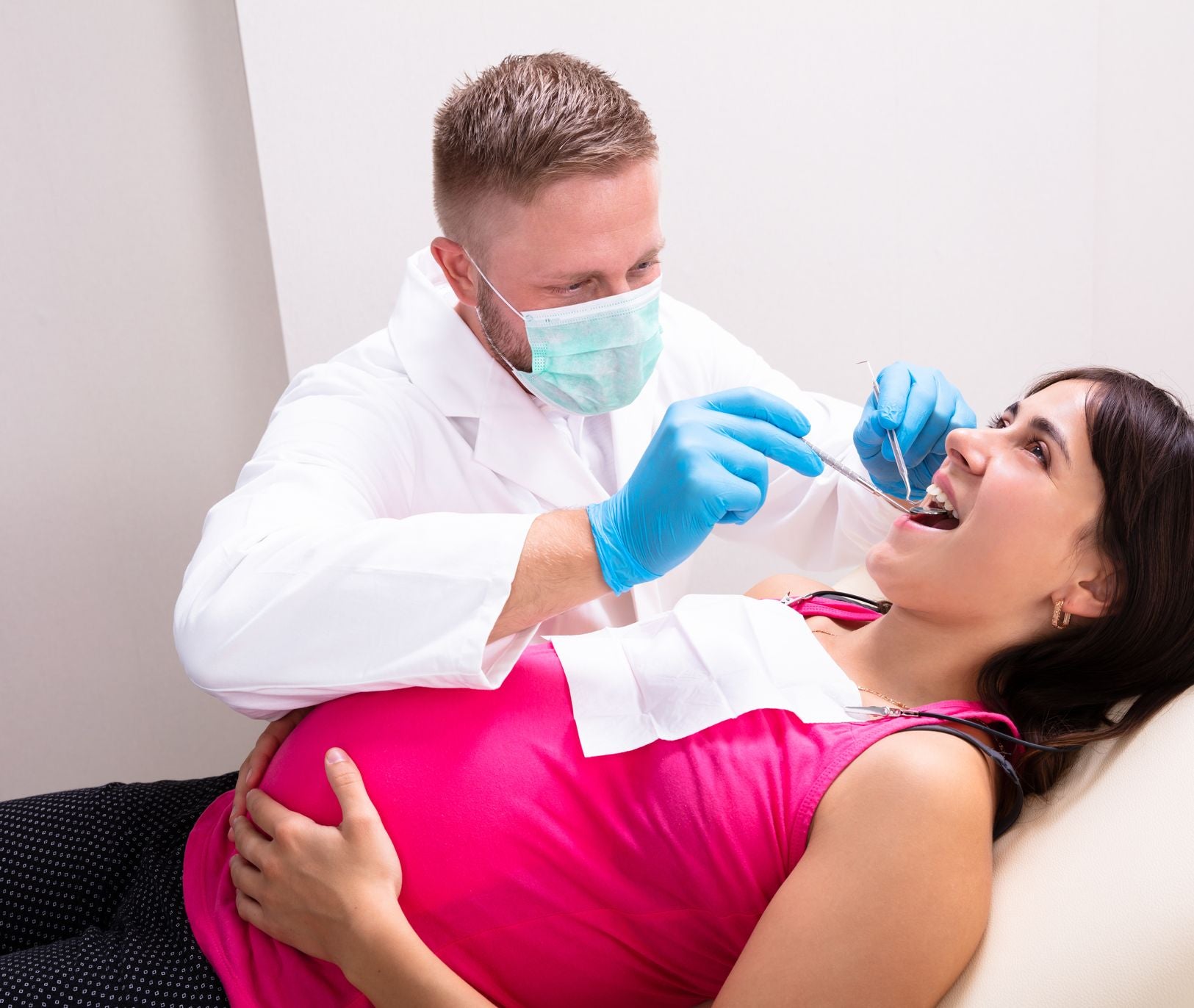
Routine dental care is important for everyone at any age, but it’s particularly crucial for expecting mothers. After all, pregnancy increases the risk of several oral health problems, and developing these problems could adversely affect your baby’s health. If you have a child on the way, follow these dental care tips to promote a healthy pregnancy.
How Pregnancy Affects Dental Health
The changes your body undergoes while pregnant may increase your risk for the following conditions:
- Cavities: Sugar cravings and the temptation to skip brushing because you’re tired or nauseous can make you more cavity-prone. The bacteria that cause cavities can then pass to your unborn baby, causing problems for the child’s teeth later in life.
- Gingivitis and gum disease: Hormonal changes increase the risk of “pregnancy gingivitis,” which affects 60 to 75 percent of pregnant women. Red, swollen, tender gums can develop into more serious gum disease, infections, and tooth loss if left untreated.
- Eroded tooth enamel: Increased vomiting from morning sickness may expose your teeth to excessive stomach acid. This can eat away at the outer layer of your teeth known as enamel, leading to tooth sensitivity, discoloration, and chipping.
- Loose teeth: Rising hormone levels can cause your teeth to loosen temporarily.
- Pyogenic granuloma (pregnancy tumors): Too much plaque can cause tender lumps to form on your gums. These aren’t cancerous, but they cause discomfort and bleed easily. Proper dental care during pregnancy can prevent pyogenic granuloma.
How to Prevent Dental Problems During Pregnancy
Keep your teeth and gums healthy throughout your pregnancy with these tips:
- Brush and floss: Brush for two minutes at least twice a day with a soft-bristled toothbrush and fluoride toothpaste. Then, floss once a day to remove plaque from between the teeth.
- Use mouth rinse and antacids: If brushing makes you feel nauseous, a temporary alternative is to rinse your mouth with a solution of one teaspoon baking soda and one cup water. You can further reduce acidity in your mouth by taking antacids. Just be sure to speak with your doctor first.
- Eat a healthy diet: Limiting sweets reduces your cavity risk. Then, eating more fruits and vegetables, lean meats, whole grains, and low-fat dairy products provides you and your baby with nutrients that promote strong teeth and healthy gums.
- Visit the dentist: Don’t skip your routine appointment because you’re pregnant. Exams are more important than ever right now! During the visit, tell your dentist about your pregnancy, any medications you’re taking, and whether your pregnancy is high-risk. Also, disclose any changes you notice with your teeth and gums.
- Get dental X-rays if needed: Rest assured that dental X-rays can be performed safely during pregnancy. The technician takes special care to safeguard you and your baby by shielding your abdomen and thyroid.
Dental checkups before and during pregnancy are essential to find and treat problems early. To schedule your next appointment, please contact Park 56 Dental in NYC by calling (212) 826-2322.
-
How to Buy the Right Toothbrush
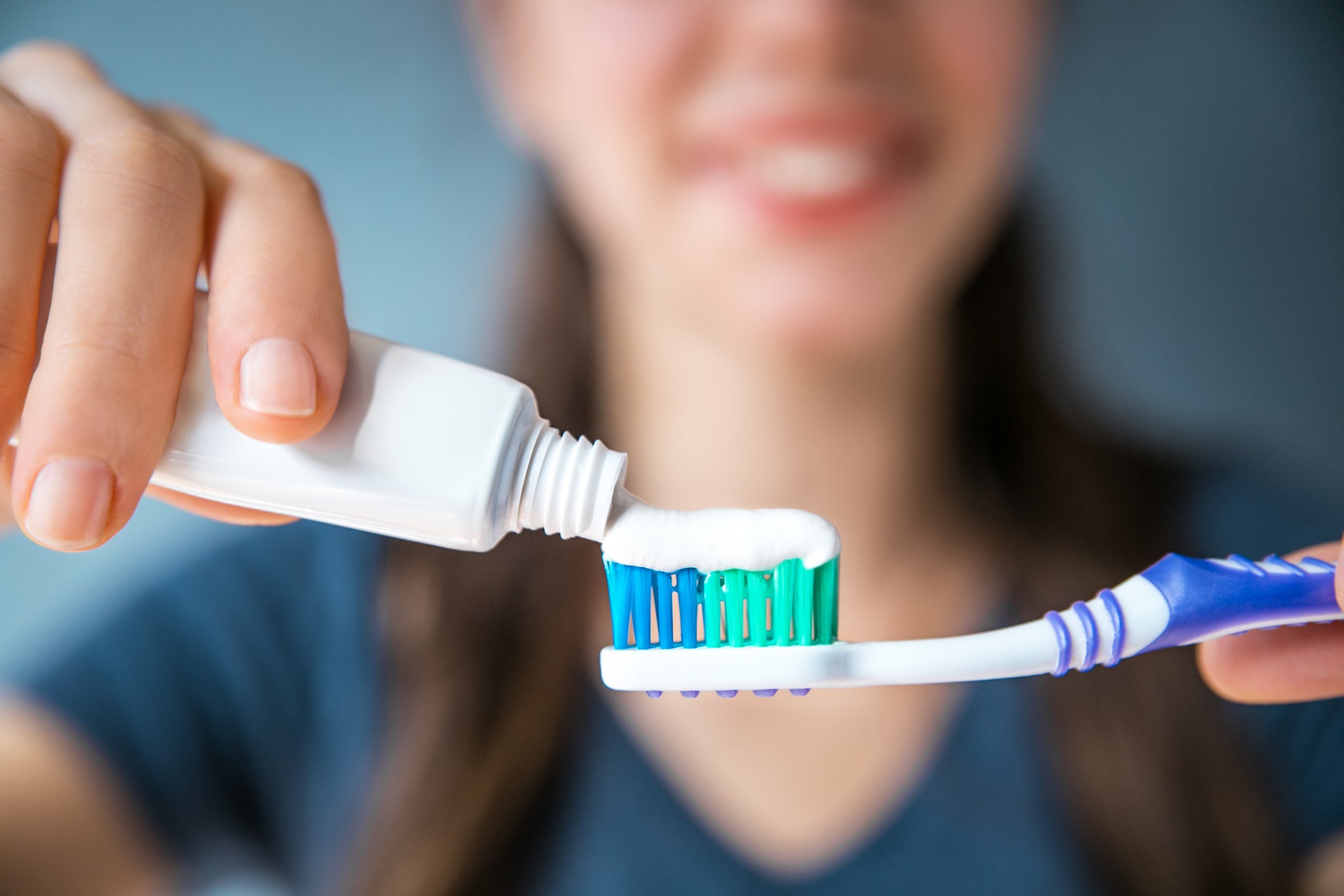
Do you feel overwhelmed every time you walk down the toothbrush aisle? Perhaps you have resorted to reaching for whatever’s on sale, buying a toothbrush because it’s your favorite color, or closing your eyes and choosing one at random. For the best results, you should make your selection more strategically. Brush up on how to buy the right toothbrush for your needs.
- Look for soft bristles: Check the packaging on different toothbrushes, and you’ll notice “soft,” “medium,” or “hard” on the label. Most people benefit from soft bristles, which clean your teeth effectively without damaging the enamel or irritating your gums. Just be careful to brush gently, even when using a soft-bristled brush, to avoid tooth sensitivity and receding gums.
- Find a small-headed toothbrush: The benefit of a small head is that the bristles can more easily reach behind your back molars. To make sure you scrub every hard-to-reach surface, avoid opening your mouth too far while brushing, which tends to push your toothbrush forward.
- Avoid cheap, no-name toothbrushes: Chances are those dollar-store toothbrushes are not approved by the American Dental Association. They may be made of inferior or even unsafe products, so leave them on the shelf.
- Choose a comfortable handle style: The toothbrush should fit comfortably in your hand. To achieve this, you may want one with a contoured handle or a flexible head that bends to reach every tooth with less effort on your part. These qualities come down to personal preference, so you may need to try a few styles to find what you like best.
- Consider an electric toothbrush: If you have trouble brushing for as long or as thoroughly as you should, an electric toothbrush could be a good investment. Studies show that electric toothbrushes remove more plaque than manual ones. The automatic bristle movement is especially beneficial for people with braces or limited wrist mobility.
- Shop wisely for your children: Babies and toddlers need the right toothbrush, too. Find one with a miniature head designed to fit their tiny mouths. While you’re at it, let your child select a toothbrush in a fun color or with a popular cartoon character that will encourage them to brush twice a day. Also, remember to use just a smear of kids’ toothpaste for safety in case they swallow rather than spit.
- Know when to replace your toothbrush: Eventually, your toothbrush will wear out, and you’ll need to shop for a new one again. Replace it every three months or when the bristles begin to look worn and frayed, whichever comes first. You should also replace your toothbrush after recovering from an illness to help prevent re-infection.
Brushing (and flossing!) every day is an effective way to maintain good oral health. However, it’s also important to visit the dentist every six months. Routine cleanings remove plaque and tartar to keep cavities and gum disease at bay. Schedule your next appointment at Park 56 Dental by calling (212) 826-2322 today.
-
The Connection between Diabetes and Oral Health
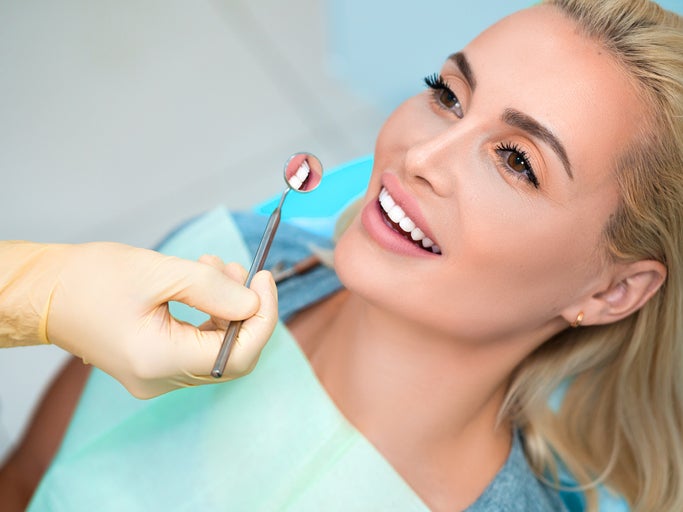
Diabetes affects how your body processes glucose (sugar), leading to high blood glucose levels and a host of related health problems. Diabetes can affect many areas of the body, including the eyes, kidneys, heart, and nervous system. Did you know there’s also a link between diabetes and oral health? Learn more about this connection and what you can do to promote a healthy smile.
Diabetes and Your Mouth
If left untreated, diabetes can take a toll on your oral health. Here are the potential problems you face:
- Periodontal disease: Diabetes reduces your body’s ability to fight the bacteria invading your gums, increasing the risk for periodontal disease (gum disease). This infection causes swollen, tender gums and may eventually lead to tooth loss. As with all infections, periodontal disease can cause blood sugar levels to rise. This, in turn, makes diabetes harder to control, and the vicious cycle continues.
- Tooth loss: Because advanced gum disease eventually causes your teeth to loosen and fall out, diabetes patients are more likely to face this oral health problem. In fact, one in five cases of total tooth loss is linked to diabetes.
- Cavities: Oral bacteria feed on the starches and sugars found in the food and beverages you ingest. Uncontrolled diabetes raises the glucose level of your saliva, giving bacteria more sugar on which to feed. This leads to more plaque buildup, which attacks your teeth and increases the risk of cavities.
- Dry mouth: Excessive thirst is a common symptom of high blood sugar. This is caused by the lack of saliva flow, a condition known as dry mouth. Without saliva to keep your mouth moist, your risk for cavities and periodontal disease increases.
- Thrush: This fungal infection may develop in your mouth as a result of low saliva flow and increased glucose levels.
How to Improve Oral Health if You Have Diabetes
Proper dental care is needed to prevent diabetes from damaging your teeth and gums. In addition to controlling your blood sugar levels with diet, exercise, and medication, we recommend following this dental care routine to improve your oral health:
- Brush your teeth twice a day.
- Floss once a day.
- Tell your dentist you have diabetes and report any symptoms you notice, such as dry mouth, loose teeth, or infections.
- Watch for early signs of gum disease, including redness, swelling, and bleeding gums.
- If you wear dentures, Invisalign, a retainer, or a mouth guard, brush this oral appliance daily.
- Avoid smoking. Tobacco use only worsens gum disease and other oral health problems.
- Visit the dentist at least twice a year to manage the oral health risks of diabetes.
At Park 56 Dental, we can help you prevent cavities, gum disease, tooth loss, and other oral health problems with routine teeth cleaning. We also offer restoration services to help you smile with confidence once more. To schedule an appointment with our NYC dentist, please contact us online or call (212) 826-2322.
-
How Smoking Affects Your Teeth and Oral Health
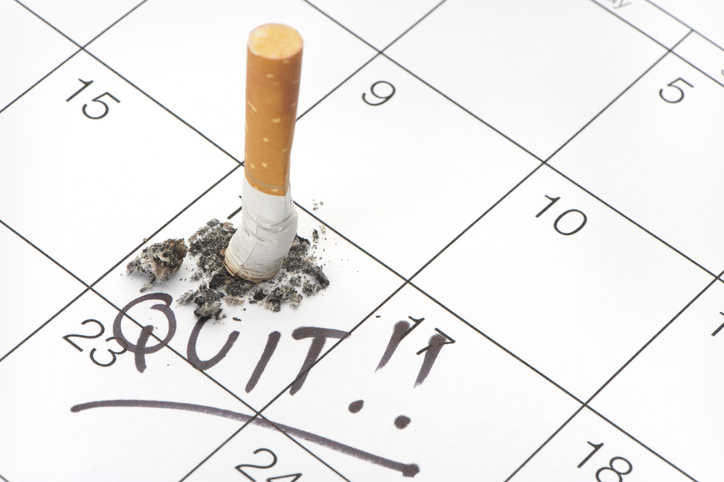
Do you or a loved one smoke cigarettes? If you’re looking for one more reason to quit, consider that tobacco use in any form raises your risk for oral health problems. Here are the issues associated with smoking cigarettes, cigars, and pipes or using smokeless tobacco:
- Gum disease: Also called periodontal disease, gum disease is an infection that causes red, swollen, tender, and bleeding gums. Smoking increases your risk of gum disease by weakening your immune system, which makes your body less capable of fighting off infection. In fact, smokers are twice as likely as nonsmokers to contract gum disease. The greater your tobacco use, the higher your risk.
- Tooth loss: As gum disease progresses, it eventually affects the underlying bone structure that anchors your teeth to your jaw. If the bone and tissue that hold your teeth in place break down, your teeth may loosen and need to be extracted.
- Plaque and tartar buildup: The chemicals in tobacco products decrease saliva flow, making it easier for bacteria to cling to your teeth and gums. If not removed daily with diligent brushing and flossing, plaque hardens into tartar, a cavity-causing, tooth-staining substance that can only be removed with professional cleaning.
- Cancer: Besides lung cancer, smoking can also cause cancer of the lips, mouth, throat, tonsils, and esophagus. The risk is six times higher among smokers. In fact, 90 percent of patients diagnosed with these oral cancers are tobacco users.
- Delayed healing: The reduced immune function caused by smoking impairs blood flow to the gums, making it harder for your mouth to heal following a tooth extraction, periodontal treatment, or oral surgery.
- Tooth discoloration: Stained, yellow teeth are a hallmark of smoking. Whitening products can sometimes counteract the effects temporarily, but the stains quickly return.
- Bad breath: Smoking leaves a stale film on your teeth and gums, resulting in “smoker’s breath.” You may be able to mask the odor with a mint for a short time, but the smell will return before long.
- Inflammation: Smoking triggers an immune response that increases the level of inflammatory markers in the bloodstream. This may increase inflammation throughout the body, including at the salivary gland openings and on the roof of your mouth.
- Darkened gums: Smoker’s melanosis, or a darkening of the gum tissue, is one response to irritating tobacco smoke. Up to 22 percent of cigarette and pipe smokers develop this oral change. There is no treatment, but the gums typically return to normal within six to 36 months of quitting.
Clearly, if you want to improve your oral health, kicking the tobacco habit is a great place to start. Your dentist can recommend useful products to help you quit, such as nicotine gum and patches. You can also pursue treatments to reverse the damage caused by smoking. For more useful tips, or to schedule an appointment with our NYC dentist, please contact Park 56 Dental online or call us at (212) 826-2322.
-
Should You Use Mouthwash?

When you picture the basics of good oral care, you probably think of brushing and flossing. What about using mouthwash? Many people include this optional step in their daily teeth-cleaning routine. Should you join them?
Benefits of Mouthwash
Here are the top reasons to use mouthwash daily.
- Freshen your breath: Antiseptic mouthwash kills bacteria that cause bad breath while leaving a minty flavor behind. If you struggle with chronic bad breath, be aware that using mouthwash won’t cure the underlying cause. Speak with your dentist about tips to combat the problem at the source.
- Remove biofilm: Your teeth comprise only 25 percent of the total surface area in your mouth. Even after you brush and floss, a thin, slimy layer of bacteria may linger on your tongue, cheeks, and the roof of your mouth. Rinsing with mouthwash minimizes this biofilm, leaving your mouth cleaner than brushing and flossing alone.
- Prevent plaque buildup: Some mouthwash products are formulated to help prevent plaque from building up between your teeth and along the gum line. This sticky substance is teeming with bacteria, so preventing it from forming is the best defense you have against cavities and gum disease.
- Strengthen tooth enamel: Mouthwash with fluoride additives can help make your teeth stronger and more plaque-resistant.
- Prevent staining: Hydrogen peroxide mouthwash has minor whitening capabilities when used as directed. Most importantly, it prevents new stains from setting in, making it an effective smile maintenance product following professional teeth whitening.
How to Use Mouthwash
To maximize the benefits of mouthwash, make sure you use it correctly. Follow the directions on the bottle with these additional tips in mind:
- Brush and floss first: Mouthwash isn’t a substitute for brushing and flossing. Perform these steps first to remove food particles and plaque.
- Use the proper amount: Pour mouthwash into the plastic cup that doubles as a lid, using the amount recommended on the bottle. This is typically between 3 and 5 teaspoons.
- Time yourself: Empty the cup into your mouth and begin swishing it between your teeth. Watch the clock or count in your head to the recommended time, which is usually 30 to 60 seconds. As you do, rinse the cup and place it back on the bottle.
- Spit: At the end of the allotted time, spit the mouthwash into the sink. Avoid swallowing.
- Don’t rinse: Mouthwash continues to work after you spit it out, so to avoid diluting its cleaning and tooth-strengthening benefits, don’t rinse with water after using mouthwash. Also, avoid eating or drinking for 30 minutes or as recommended on the bottle.
Need help selecting the ideal mouthwash for your needs? Speak with the expert team at Park 56 Dental. Besides informing your at-home oral care routine, we also offer preventative and restorative services to keep your smile looking healthy and bright. Call us today at (212) 826-2322 or contact us online for more tips or to schedule an appointment at our NYC office.
-
Traditional Braces vs. Invisalign
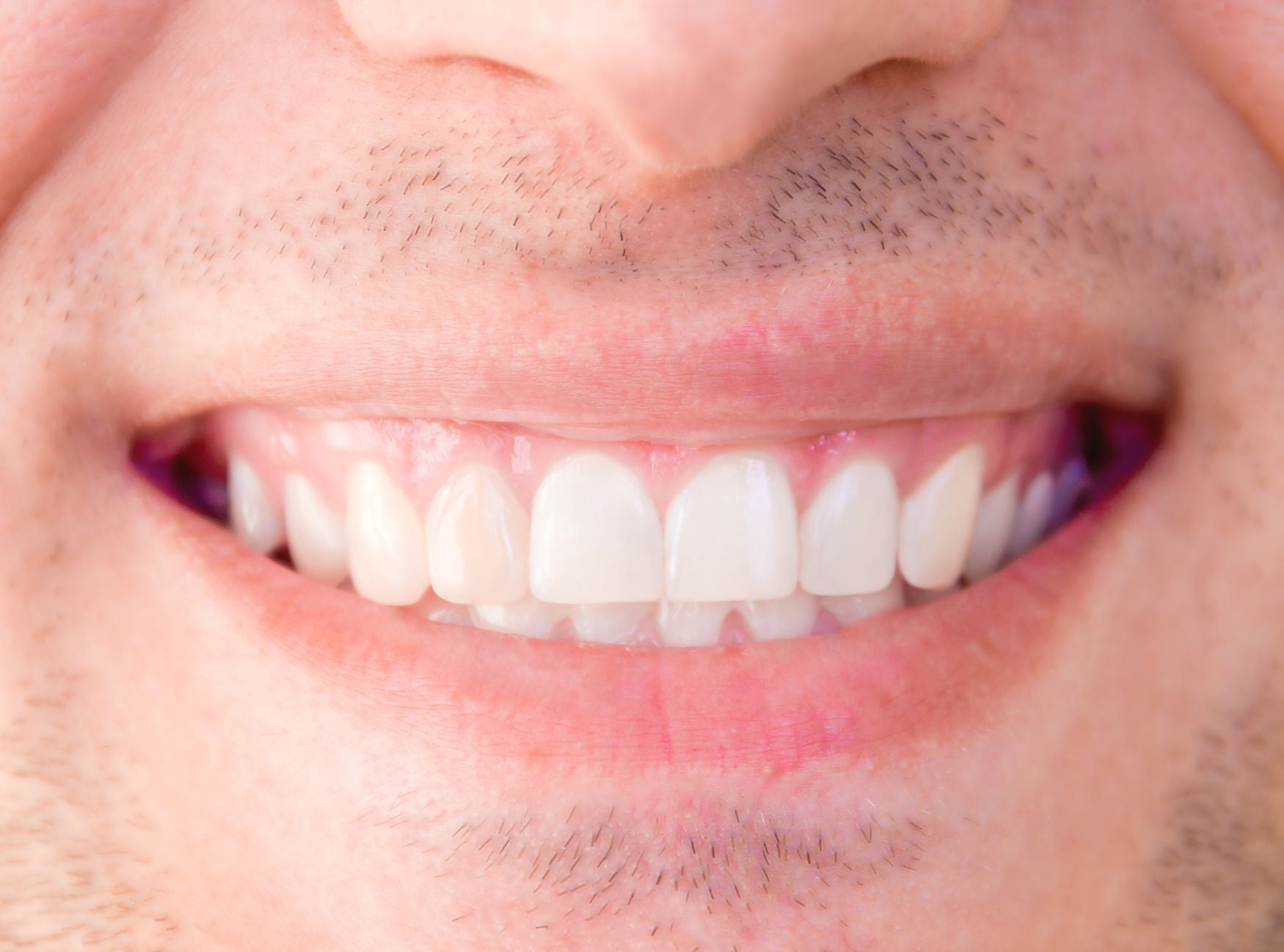
Are you looking to improve your smile with straighter teeth? You have two primary options—traditional braces and Invisalign. Compare these teeth-straightening methods to help you decide which one is the best choice for you or your child.
Traditional Braces
When most people think of braces, they picture the metal brackets and wires of traditional braces. These are glued to your teeth and cannot be removed. Here’s what to expect from this option:
- Aesthetics: While they never fully disappear, traditional braces are available with enamel-colored components to make them less noticeable. Teens may also enjoy making a statement with brightly colored brackets and wires.
- Treatment time: The average patient needs braces for two years, though this varies greatly depending on the individual’s needs.
- Cleaning: Brushing and flossing with braces is more difficult and time-consuming, leading to an increased risk of discoloration and cavities.
- Comfort: Brackets and wires are notorious for causing lip and tongue sores.
- Effectiveness: Traditional braces are often the best choice for complex issues, such as correcting back bite issues, rotating canines or premolars, and moving teeth vertically.
- Lifestyle: Patients who wear traditional braces must follow certain dietary limitations to avoid damaging the brackets and wires with sticky, chewy, or hard food. Traditional braces are also not ideal for anyone who plays rough contact sports.
Invisalign
The premise behind Invisalign is to provide a more discrete teeth-straightening option. The dentist uses an impression of your mouth to produce BPA-free plastic aligners, which you wear for two weeks before moving to the next set. Here are some qualities of Invisalign to consider:
- Aesthetics: Invisalign aligners are virtually invisible. Unless you tell people, it’s unlikely anyone will notice you’re wearing them.
- Treatment time: The average patient completes Invisalign treatment in six to 18 months, depending on their needs. To maintain your treatment schedule, be sure to wear your aligners for 22+ hours per day, only removing them to eat or drink anything other than water.
- Cleaning: The aligners must be brushed and rinsed daily to avoid harboring germs. While this adds an extra step to your oral care routine, the ability to brush and floss your teeth like usual is a huge benefit.
- Comfort: Invisalign has a smooth surface that feels comfortable on your cheeks, tongue, and gums.
- Effectiveness: Standard Invisalign is best for treating relatively simple issues, such as overcrowding and bite problems. However, with the addition of clear buttons, it’s possible to achieve more complex corrections.
- Lifestyle: Because you remove the aligners before eating, you don’t have to give up your favorite foods. Of course, this requires extra care to avoid losing your aligners. We also recommend brushing your teeth after every meal to prevent staining the plastic.
To learn more about traditional braces vs. Invisalign, please call Park 56 Dental at (212) 826-2322 or contact us online. We proudly offer Invisalign in NYC, the modern way to straighten your teeth and improve your smile.
-
What to Look for When Choosing a Dentist
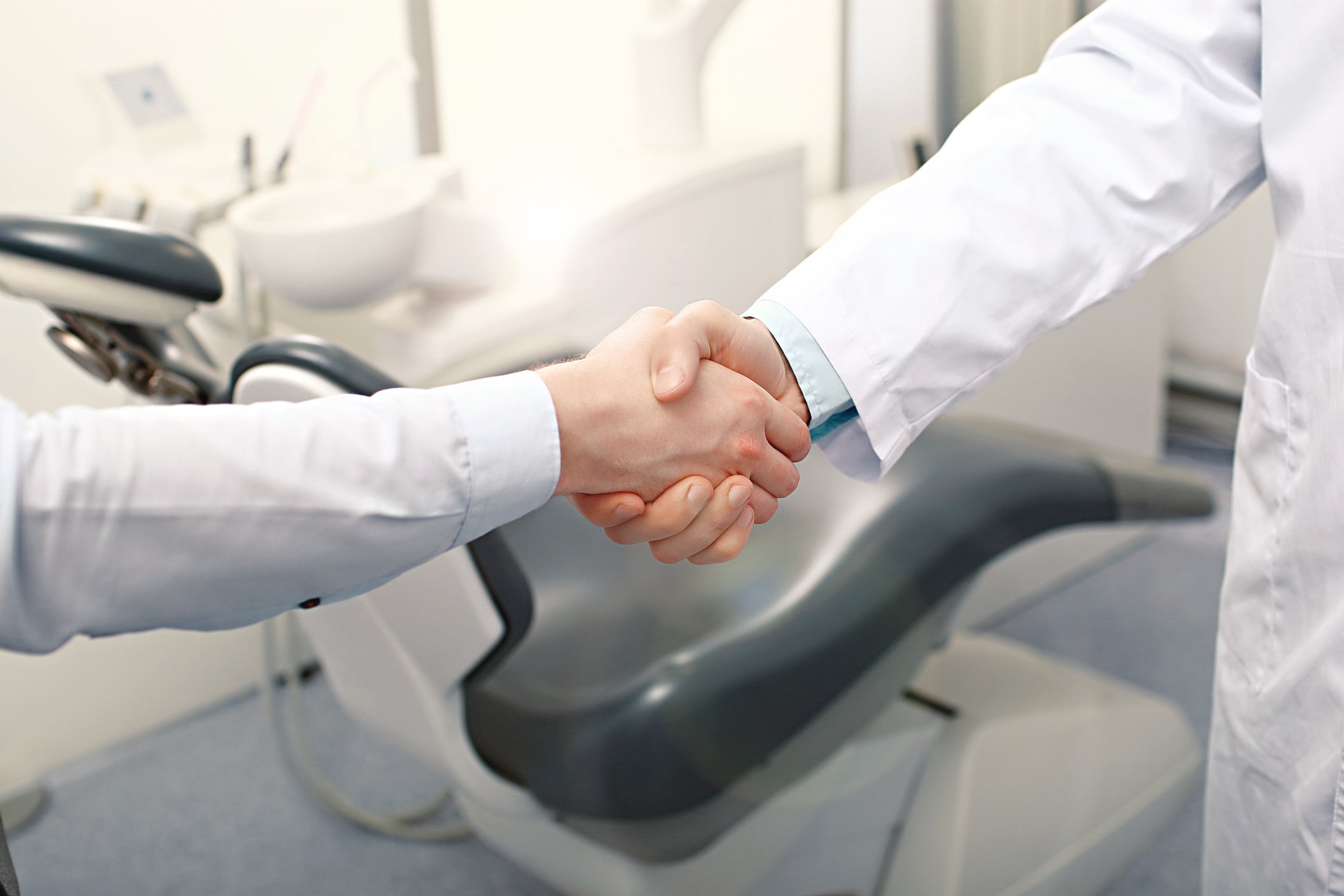
Your dentist should be a trusted professional you can rely on. The goal is to look forward to your dentist visits, not dread them. This is why finding a dentist that “clicks” with you and your family is such a vital part of ensuring excellent dental care. Here’s what to look for if you’re searching for a reliable family dentist in NYC.
- Insurance coverage: If you have dental insurance, it’s most cost-effective to choose an in-network dentist that accepts your plan. Check your insurance provider’s website or contact local dentists for more information.
- Positive patient feedback: Online reviews provide an unbiased look at overall customer satisfaction ratings. Steer clear of any dentists with numerous one- and two-star reviews.
- Recommended by others: In addition to the reviews you read online, ask around for recommendations from people you trust. Find out where your family, friends, neighbors, and coworkers go, as well as what they like or dislike about their dentist. You can also ask for a referral from your family doctor.
- Convenient hours and location: Ease of accessibility is an important part of making dentist visits a priority. You are more likely to set routine cleanings and exams if the appointment times fit your schedule, such as early morning and Saturday hours. It’s also best if the dentist’s office is conveniently located near your home, work, or child’s school.
- Fair policies: Review each dentist’s website or call the office to find out more about their policies. Do they educate patients about their treatment options? When are payments collected? How does the dentist handle canceled or missed appointments? The right dentist should have fair policies that meet your needs.
- Updated cleaning and safety precautions: During the coronavirus pandemic, dentists and other medical professionals should follow CDC guidelines to promote an especially clean environment and reduce the spread of COVID-19. Ask any dentists you’re considering about the safety precautions they’re taking.
- Good first impression: Pay attention during your initial consultation. Is the office clean and orderly? Do the staff members treat you with courtesy and respect? Is your medical and dental history recorded and placed in a confidential, permanent file? Feeling welcome, comfortable, and cared for is a vital part of choosing the right dentist.
- Dental services that meet your needs: Not all dentists offer the same procedures. Because you can’t always predict the care you’ll need in the future, it’s best to choose a dentist with comprehensive services. This includes general and cosmetic dentistry, Invisalign, oral surgery, emergency services, sedation dentistry, and more.
Park 56 Dental is ready to meet your family’s dental care needs! We have been voted Top Dentist in NYC, with over 20 years of experience delivering the highest level of dental treatment in a luxurious, spa-like environment. To learn more about our team and everything we have to offer, please call (212) 826-2322 and schedule an initial consultation with us today.
-
How to Take Care of Your Teeth between Dental Visits
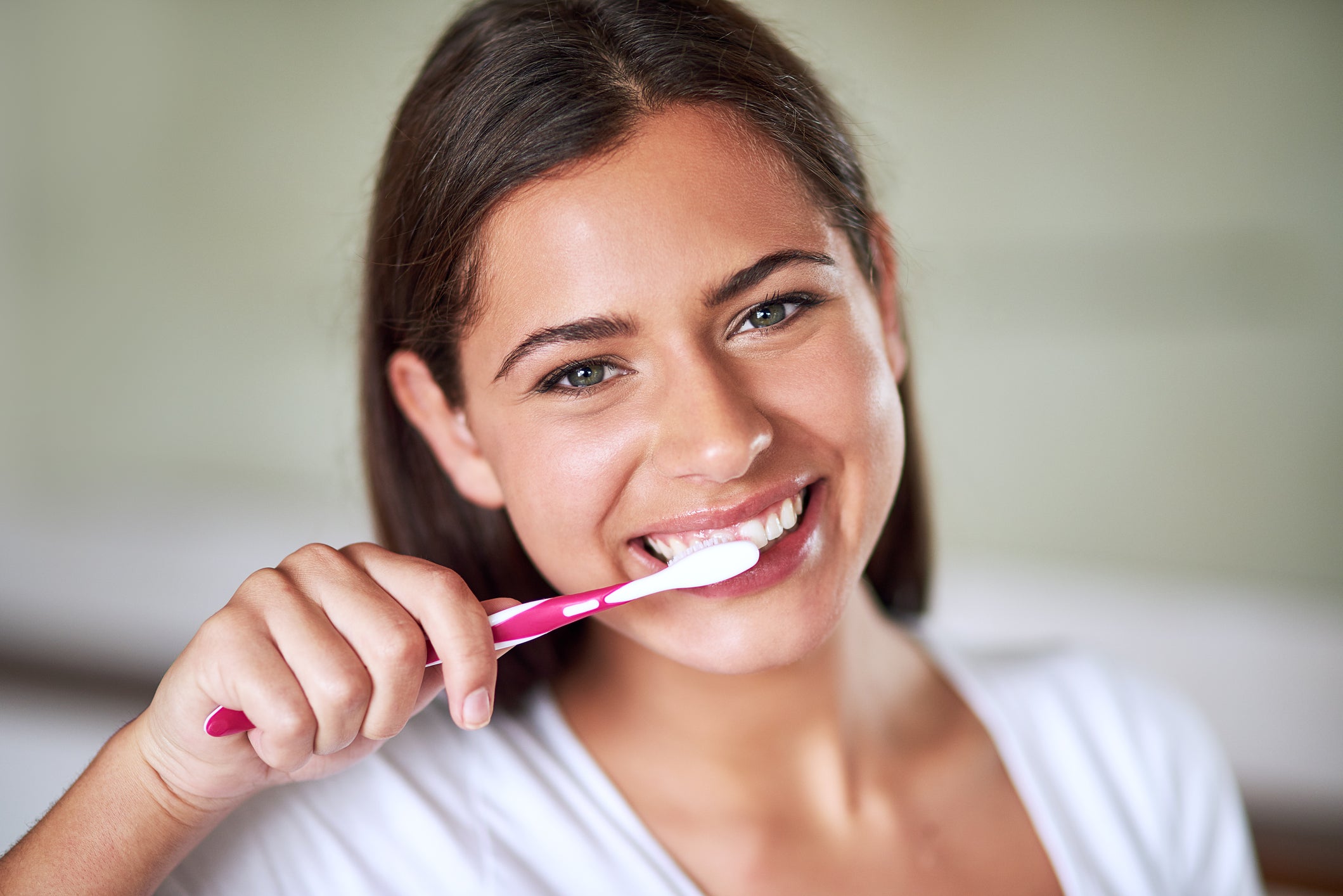
The importance of professional teeth cleanings cannot be understated. Seeing your dentist every six months promotes healthy teeth and gums by detecting and treating dental problems early. Still, there are plenty of things you can do at home to take care of your teeth between dental visits. Here’s what we recommend to prevent tooth and gum problems before they start.
Use Proper Tooth Brushing Techniques
Make a habit of brushing your teeth at least twice a day, preferably 30 to 60 minutes after every meal. Brushing removes plaque and acids from your mouth while leaving a fresh, minty scent behind. For the best results, follow these techniques:
- Hold your toothbrush at a 45-degree angle along the gum line.
- Brush with short, circular motions.
- Be gentle to avoid irritating your gums.
- Brush for a full two minutes.
Don’t Forget to Floss
Flossing gets between your teeth where toothbrush bristles can’t reach. Floss once a day to help prevent plaque from hardening into tartar, which can only be removed by a dental professional. It doesn’t matter what time of day you floss—just remember to do it! If you don’t like using traditional floss, try floss picks or a water flosser for the same benefits.
Rinse with Mouthwash
The third part of your daily oral care routine should be to swish mouthwash. Antiseptic or antibacterial mouth rinses are the best options for killing bacteria that cause plaque. Rinsing as recommended also helps reduce bad breath and even reverses early gum disease.
Cut Back on Soda and Added Sugar
Sugary sodas and other sweets are known to wreak havoc on your teeth. Sugar promotes bacterial growth and causes plaque to form. Even if you opt for “diet” soda, the phosphoric acid and citric acid in these drinks still eat away at your enamel, making you more prone to cavities. The occasional soda won’t cause much harm, but water is the best drink for a healthy smile. To add a little flavor, try putting fruit or mint leaves in your water.
Eat More Fruits and Vegetables
Crisp, fresh foods like apple slices, raw carrots, and celery sticks don’t just provide your body with essential vitamins and nutrients—they also act as natural tooth scrubbers, helping to cut down on plaque and stimulate your gums. Include fresh produce in every meal for a healthier smile.
Chew Sugarless Gum
While it’s ideal to brush after each meal, chewing sugarless gum is the next best thing. This increases saliva production, which helps remove lingering food particles and rebalances the pH level in your mouth. The minty flavor also helps to improve your breath.
Park 56 Dental is pleased to offer routine teeth cleanings and other dental services to help our patients smile with confidence. Visit our spa-like, patient-centered dentist office to receive the personalized, quality care you deserve. Contact us online or call (212) 826-2322 today to find out for yourself why we’ve been voted Top Dentist in NYC!
RECENT POSTS
categories
- Uncategorized
- Cosmetic Dentistry
- Veneers
- Healthier Teeth
- Teeth Whitening
- Dental Health
- Video
- Dental Emergencies
- Invisalign
- Dental Implants
- Root Canal
- Sedation Dentistry
- Infographic
- Dental Crowns and Bridges
- Dental Anxiety
- Gum Disease
- COVID-19
- Bad Breath
- New York Dentist
- Cut out sugar
- General Dentistry
- Oral Health
- Oral Cancer
- Dry Mouth
- Gum Health
- Toothache
- Dental Sealants
- Cavities



